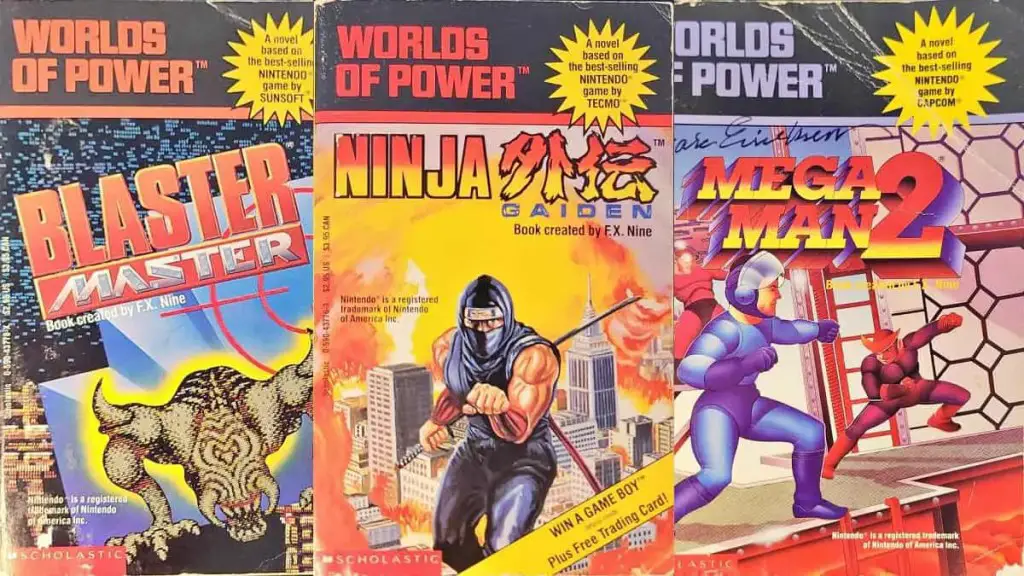What Were The Worlds of Power Novels?
In the Nintendo Entertainment System (NES) era (1985 to the early 90’s), there wasn’t a whole lot of in-game story development. In most cases it was neither possible nor practical for games at the time. Therefore, gamers of the day were forced to turn elsewhere to learn the backstory behind their favorite titles. Game manuals themselves offered some insight, but one place a lot of gamers turned to were publications like Nintendo Power or Nintendo’s line of video game novelizations, Worlds of Power.
The Worlds of Power series covered many popular games at the time and were published under the pen name F.X. Nine, a pseudonym for the series’ creator Seth Godin. An interesting side note, the name came about as a way to ensure that Nine’s book were placed besides Nintendo books on stores’ shelves. The Worlds of Power series included the following books:
- Blaster Master by A. L. Singer
- Metal Gear by Alexander Frost
- Ninja Gaiden by A. L. Singer
- Castlevania II: Simon’s Quest by Christopher Howell
- Wizards and Warriors by Ellen Miles
- Bionic Commando by Judith Bauer Stamper
- Infiltrator by A. L. Singer
- Before Shadowgate by Ellen Miles
Junior Edition Books
- Mega Man 2 by Ellen Miles
- Bases Loaded II: Second Season by A. L. Singer
Worlds of Power Author Peter Lerangis Q&A
I had the opportunity to ask Peter Lerangis AKA A. L. Singer about his work on the Worlds of Power novels and he had a lot of interesting stories to share. He talked about the conceptualization of the series, how he experienced game play, and some funny anecdotes surrounding the series. He also explained one of the books’ most criticized points—the fact that the stories weren’t more true to the games themselves.
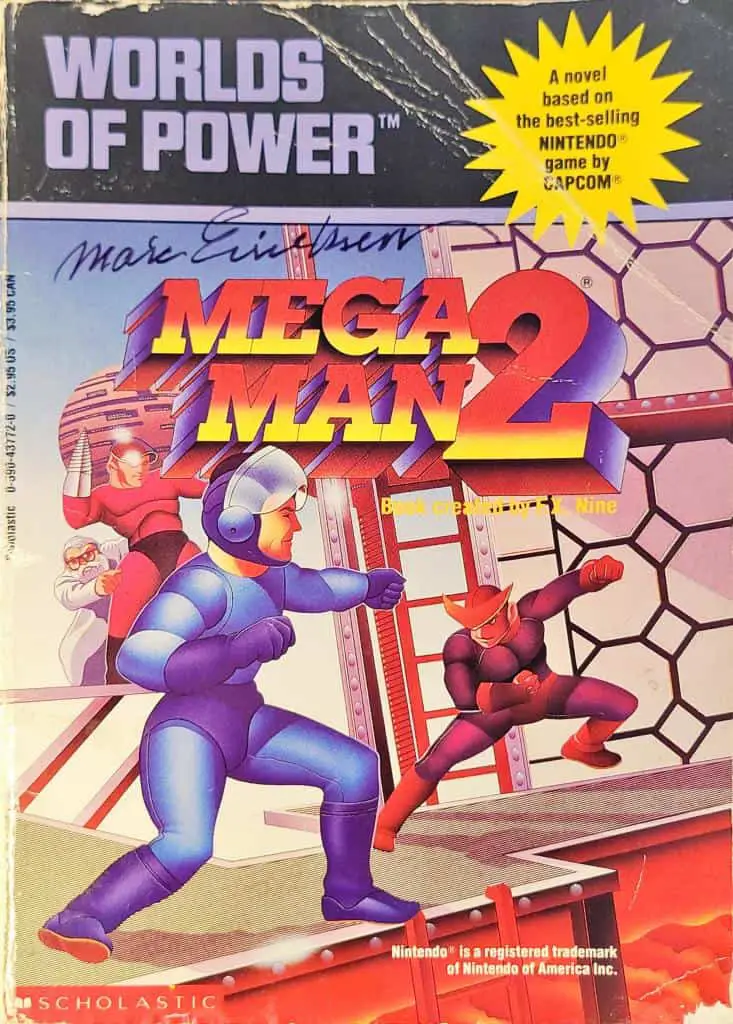
Nintendo’s Involvement
TFTC: Did Nintendo provide you or the writers with any guidance in regards to the plot or characters, or were you given free reign?
Lerangis: I can’t speak for the other writers, but I got none. Seth Godin, in his wizardly way, had gotten the contract from Scholastic to independently produce, or “package,” this series of books. This meant he got a budget from the publisher and then hired writers to fulfill the vision. So essentially there were four layers: Nintendo, publisher, packager, writer. I’m not sure whether Seth or Scholastic (or both … or neither!) were in touch with Nintendo on the editorial content. The books have a disclaimer that Nintendo was not involved, a fact around which I have trouble wrapping my mind. But clearly, and happily everything flew and no one sued.
The books have a disclaimer that Nintendo was not involved, a fact around which I have trouble wrapping my mind.
How Gameplay Influenced the Novels
TFTC: How much gameplay was usually required for these books? Did you always play the games from beginning to end?
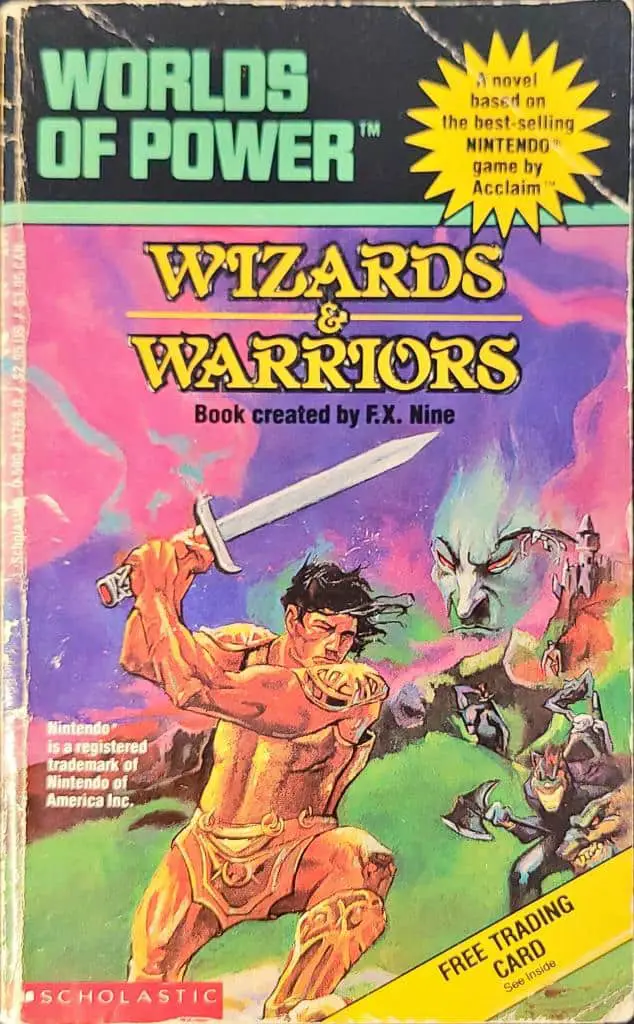
Lerangis: I was on my own. Seth recommended that I play the games, and he also introduced me to one of his neighbors, a fifteen-year-old gamer who helped me out. Keep in mind, this was the late ’80s/early ’90s, so the games were pretty crude. I always tried to play on my own, but I never got very far. When you’re under deadline pressure for several books, you simply don’t have the time to master the games. I also had a toddler son and a newborn so time was extremely limited!
This was the late ’80s/early ’90s, so the games were pretty crude. I always tried to play on my own, but I never got very far.
The Unique Nature of Worlds of Power
Retro Informer: How did this project compare to other works that you have been involved with in the past?
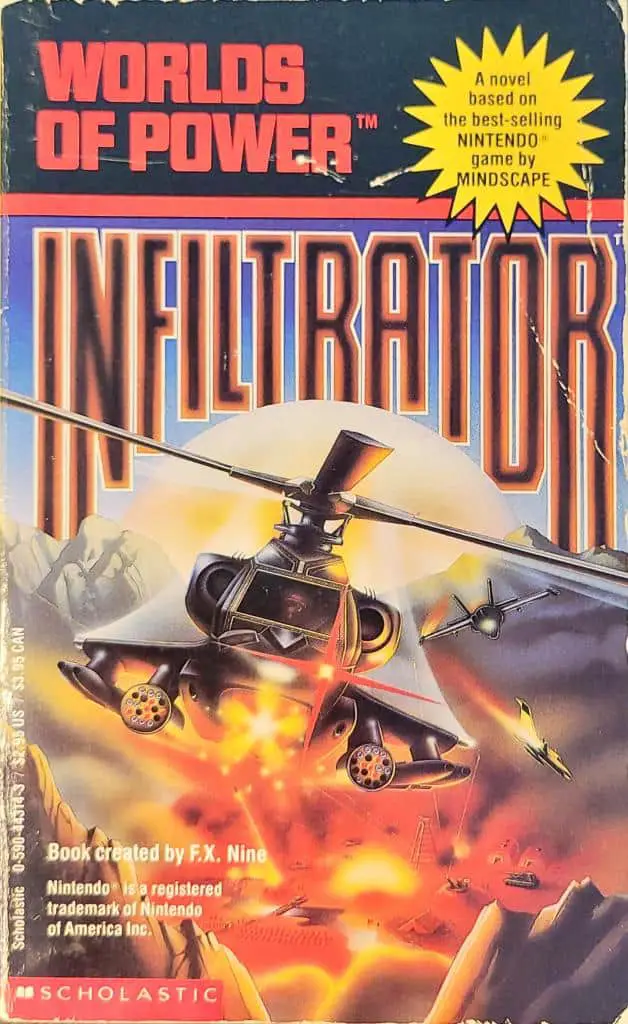
Lerangis: This Kind of Work, for a writer, is essentially “work-for-hire” —i.e., you are fleshing out a concept that is given to you, as opposed to your own idea. So you don’t own the copyright or the characters. Your task is to inject the project with as much of your own voice and style as you can. In the best-case scenario, you want to create a work that stands on its own, that can be enjoyed by someone who’s never come near the game. At the time I was doing a lot of work for hire — Hardy Boys, Hardy Boys/Nancy Drew Super Mysteries’, The Three Investigators, Sweet Valley High, Sweet Valley Twins, GI Joe, and several other series that died quick and merciful deaths.
But although I was used to the type of work, the Worlds of Power books were a special challenge, because I received no formal outline and I was free to interpret each game as I saw fit. It was fun to spin plots out of these linear games and give the stories as much depth as I could.
It was fun to spin plots out of these linear games and give the stories as much depth as I could.
I felt that if I could get gamers to enjoy the books, they would (a) feel closer to (and gain some unexpected insights with) their gaming experience, which would make playing more fun, and (b) develop an interest in reading books generally. That was a secret mission Seth and I both shared — turning kids on to literature.
That was a secret mission Seth and I both shared — turning kids on to literature.
Also, I’d never worked with a packager quite like Seth. We were both just starting out, and his energy was infectious. He was also a wicked prankster. In those days, before the internet, people used faxes for important transmissions, and he fashioned a fake movie offer for one of my books, “signed” by Steven Spielberg. I was renting office space from a small company at the time, and we were all excited beyond belief— until I called my editor and he gently explained Seth’s sense of humor.
[Seth] fashioned a fake movie offer for one of my books, “signed” by Steven Spielberg.
The Good & Bad of Writing Worlds of Power
TFTC: Were there any big surprises for you with creating Worlds of Power?
Lerangis: Yes, Blaster Master had no plot! I had to spin that one from the ground up.
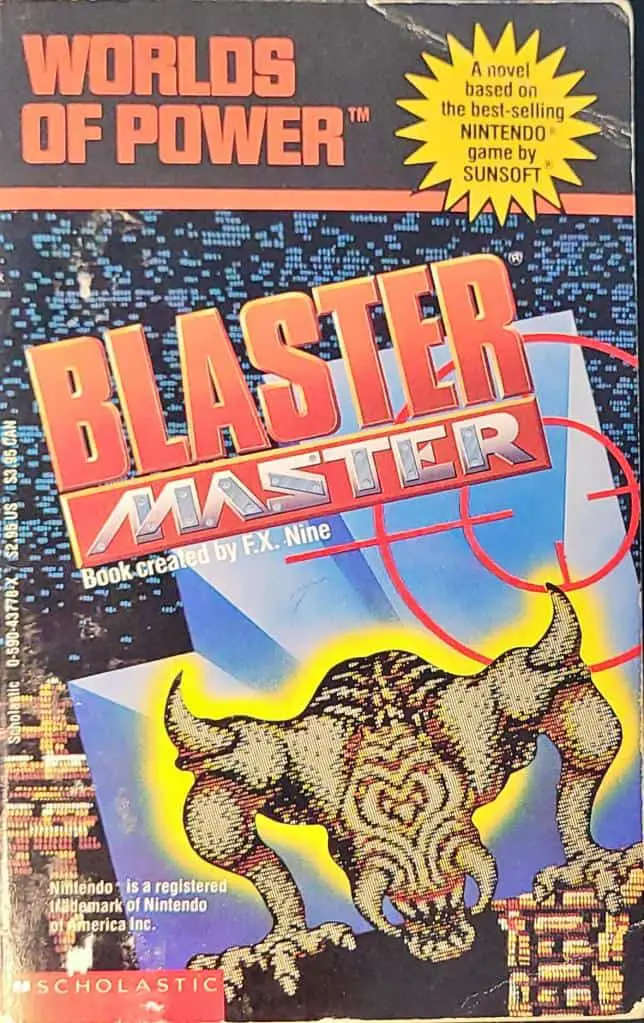
TFTC: What was your favorite book in the series?
Lerangis: I think Ninja Gaiden was my favorite because it had such a strong emotional hook. But Bases Loaded II was a total blast. I think it took only a week or so to write.
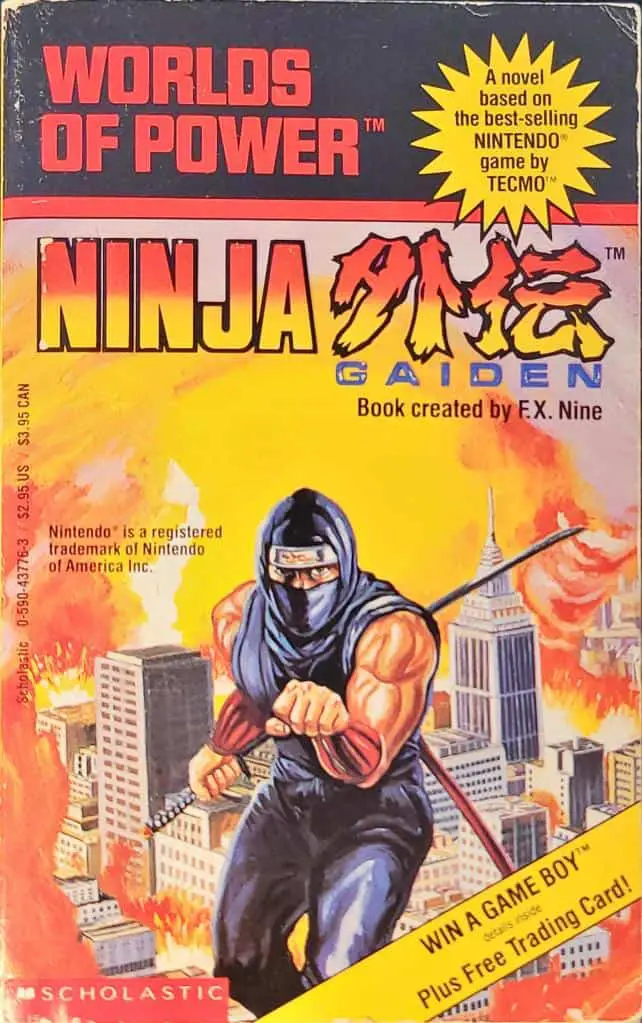
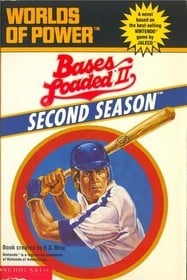
Seth Godin Q&A
TFTC: How did you come up with the idea for Worlds of Power?
Seth Godin: I came up with the idea when I saw my cousin, who was 12, endlessly playing Nintendo games instead of reading. I was a book packager, and two plus two…
TFTC: Did Nintendo provide you or the writers with any guidance in regards to the plot or characters or were you given free rein?
Seth Godin: I had to write a 20 page summary of each novel, get it approved by the game company and then hand it to my writer. We actually didn’t ever get the okay with Nintendo, so each book was based on a 3rd party game.
TFTC: How much gameplay was usually required for these books? Did you always play the games from beginning to end?
Seth Godin: The gameplay was created by my cousin. I hired him and his friends to hook up a VCR and play the games, then I used the tape to write my summary.
TFTC: How did this project compare to other works that you have been involved in in the past?
Seth Godin: This project was different from the 120 books I did because
a. it was fiction, most weren’t
b. I had to typeset, etc, which was a first
c. we sold a million copies, which was fun!
TFTC: Were there any big surprises for you with creating Worlds of Power?
Seth Godin: The biggest surprise was that Scholastic, the publisher, wouldn’t let us use vampires and other evil creatures, but then, just a few years later, published Harry Potter!
TFTC: What was your favorite in the series?
Seth Godin: My favorite was Ninja Gaiden.
